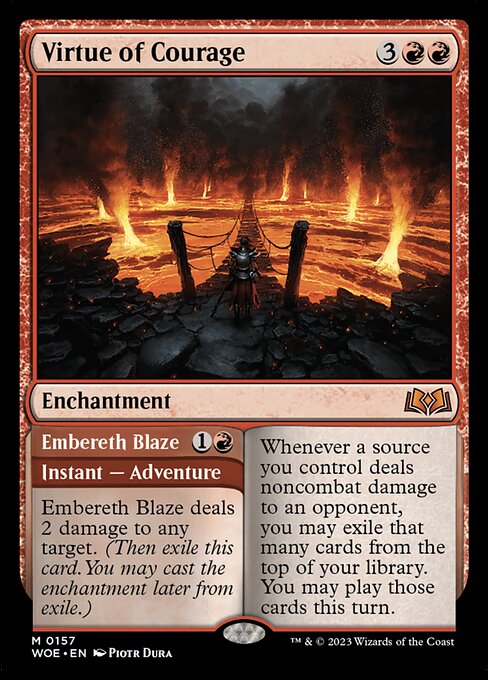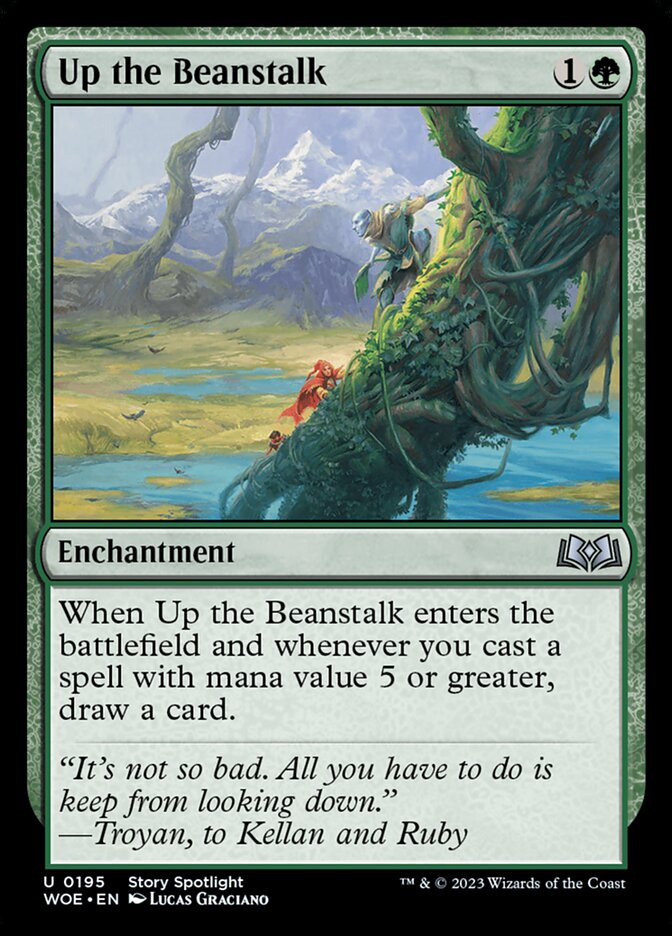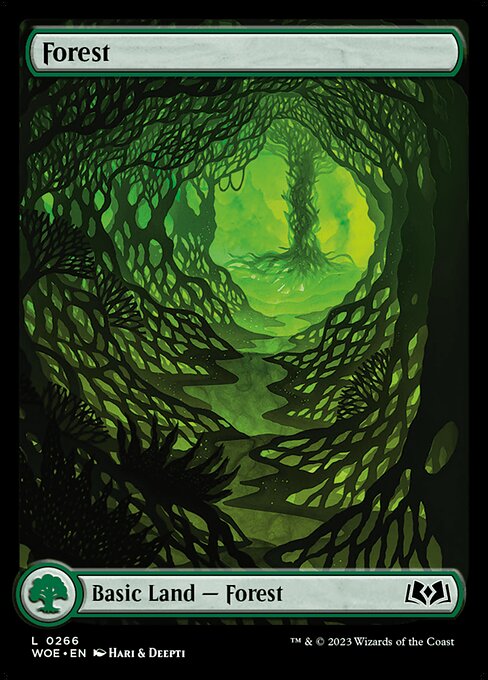I made a post already regarding intended tweaks to the general power level of the cards I was making. It only covered half the story however. They were the cards I chose to shift a little, for the sake of learning or achieving specific goals. There are a pile of other types of card that I designed with rather unconventional power level bars based on where they are going - a cube. Occasions where I am forced into going against conventions in card power level rather than electing to. It is a bit like how the balance of cards in MtG sets differs between Commander product, things going into standard, and things going straight to modern. The Cards are not uniformly different in power level. Commander cards can afford loads of stuff that would be egregious in 1v1 formats, cheap efficient dorks are rarely all that exciting in commander, nor are single target counterspells, discard effects, or cheaper removal. Those sorts of cards in commander products are often way more powerful when looked at through the lens of a modern or cube player. In modern you can afford to really push the high curve cards, from about 4 mana up the card wants to be utterly devastating, the kind of top end card that is wildly oppressive in standard just isn't going to be close to playable in modern most of the time etc. etc. All formats have their different bars for power and cube is no different, some types of cards perform much better and need no pushing to get attention while other kinds of cards need a lot more of a push, or can simply take a much bigger push in power without upsetting any balances. The card below is wildly over powered and shouldn't be printed in any constructed format but as a one of in a limited setting it is going to do no real harm at all. It is a one for one answer that will often leave the caster behind on multiple metrics. I was going to balance it to be less powerful relative to exiting removal but I was happy with how clean and simple the card was and so I have chosen to keep it as it is. Being gold and removal grants extra licence to push limits.

First and foremost cube is a limited format and in those there are some reasonable heuristics that ring reasonably true throughout. The majority of your non-land cards want to be threats or answers. This means that any card outside of that group has a bit more work to do. Some groups rather more than others. Ramp, card quality, and card draw, while all suffering from diminishing returns in a deck, are all desirable and playable to a good extent in cube. They don't need any sort of buff or nerf compared to the reasonable and balanced iterations of these cards you find in cubes. These ramp, card draw, card quality cards, and one other group - creature buffs, make up the bulk of the non-threat, non-answer cards you find in cubes. Below is simply a minor, yet significant, buff to Sleight of Hand, which is a playable but relatively low tier card quality spell in cube. This is significantly more option dense than Sleight which is a nice win for so few extra words or complexity. It is also a much cooler synergy piece in a world with lots of graveyard stuff.

Creature buffs come in such a variety of forms that we need to break it down. There are persistent global buffs that I usually just call Anthems and there are persistent single target buffs like equipment and vehicles. These are all strong tools that can add scaling and reach and good raw power but that must be used with caution as they do nothing when you don't have dorks to use with them. The various persistent buff effects, although suffering some diminishing returns, do not need any help to perform well in cube, you just can't go nuts playing and including them. The card below is a side grade on Glorious Anthem, which itself is the sort of baseline acceptable power for an Anthem. While this might not be more powerful it does manage to be a little more interesting and interactive which is always nice.

It is the other kinds of buff cards that need real help. The "at the time" buffs which are your Giant Growth cards and your Curiosities. These not only need you to have creatures, they need you to have them at the time of deployment. They are narrower and riskier as a result and really need a massive push to become playable. Combat tricks tend to be quite swingy when they work out well so I typically try and improve them by increasing playability. This means tossing on some cycling or putting them as part of a Charm or other modal card. That is my preferred means of aiding a combat trick. Adding power just makes them more swingy. Tucking narrow effects onto modal cards; Charms, Commands, Planeswalkers, Confluences, things with escalate, entwine, and the like has been my main way of including things that are either too narrow or too low powered to merit their own card.

As far as aura based buffs go it is really hard to say. Rancor is really the only one to have ever done much work in cube but this is because it was more of an equipment in function if used carefully. That, and it was over powered in its time of course too, yet it doesn't get a look in now. Armadillo Cloak is another card you could put a case forward for but it only really did anything because it was put on cards with hexproof and other tedious such things. It was more of a combo as a result. In an attempt to make some aura buffs playable I have really pushed the boat out. These are some of the highest power auras out there and shouldn't be printed for any constructed setting ever! Likely my most pushed cards in the set. Hopefully it is enough to get them some action without being too oppressive in terms of game play. I have attempted to achieve this by offering relatively meagre tempo gains and focusing more on safety and value. This card is just Curiosity but pushed significantly, twice. So much so that it gives the card a kind of modality where it can be used as protection or as card draw.

In cubes that do not include combo archetypes and strategies the various Tutor cards are not very exciting. In my midrange cube things like the Recruiters are too low powered and narrow. Even Demonic Tutor is rarely worth it. No spell stays competitive once you add two mana unless it has impressive scaling or you are a toolbox deck. Neither are really things in most cubes. Synergy cards just put parasitic strain on the limited side of things. That gave me a bunch of room to toss in some fairly safe tutor cards that would be a little too dangerous to include in most other formats. While not the most powerful of the tutors I have made, the one below is one of the more interesting ones. I have a lot of small dorks like this that find a colour pie appropriate range of stuff that is cheaper than you would expect to see on a real card.

Utility lands are almost never worth it in cube as they not only tend to have quite a low impact on games, they also "waste" a pick you could just have run a basic land over. In constructed it is nice to get all sorts of extra value in your mana base with cool utility lands. It is almost never worth doing that in cubes as the opportunity cost is so high. I didn't make many utility lands, most of those I did make also did some fixing. The more pure utility lands I made I pushed pretty hard so as to make them actually worth a slot. I also slapped on some land types to make them more accessible and thus able to be part of a plan or synergy more readily. Even with all this pushing I am not sure these will last. This is still a Plains that comes in tapped and requires effective 4 mana to draw a card. That is still not a cost you can pay in most stages of most games.

Fixing, like removal, is another area you cannot do too much damage with. I thought I had finished all my required land cycles relatively early on in proceedings but I overshot the mark rather significantly on cards made (just shy of 700 as we head towards the printing), and so to accommodate them properly I had to make some more lands dedicated to fixing. As lands in cube dilute playable spells, you want as few as possible. You also want enough so as to not be having games decided all the time by bad mana. A solution to this is to have land cycles that are compact, they offer a lot of fixing range in relatively few cards. Being a bit short of nice clean designs I threw out these seemingly insanely good lands. I threw out a token "legendary" status as a nod to how good they would be in constructed. But, even with all that, they still actually fall short of the raw power of sac lands in cube and so I am not even all that fussed on power level. I get some nice pretty, space efficient, and oh so clean, tri lands for my home made cube. And I feel justified in doing so based on existing precedent.

There are those cards that are inherently a bit narrow. Raise Dead is a classic black effect you want to give a nod to. The card is cheap and card neutral which is usually enough. Things that are card neutral are those that get away with not being a threat or an answer themselves. Indeed, Raise Dead can be a threat or an answer if you have the right cards in the bin! The issue with it is that it can do nothing. You need the things there to play it and as such it can fail to offer opportunities. By making it a Seal effect rather than an immediate one you can get the card out of your hand and invest the mana in playing it without having a (useful) target. By bolting on a very low value passive you can make the card a bit more self contained and a bit more useful. This is now arguably at its best on turn one as opposed to its least playable. This might even be the case without the mill in a lot of settings.

Lastly we have those build around and support cards at either end of the synergy spectrum. The card below is just an attempt to "fix" Goblin Bombardment. This is at the payoff end of the synergy spectrum. I like Goblin Bombardment and the archetypes you play it in but I find it a little oppressive in power, allowing too much freedom and negating too many effects on the way. I have certainly tuned down the impunity with which you can use and abuse it but I think I have managed to keep it reasonably decent by expanding its range to toss artifact as well. You want cards like this not on creatures so that they stick around a bit better and offer their services more consistently. That however makes it not technically a direct threat itself and thus demanding of more scrutiny as well as plenty of power and as much playability as possible. Ultimately this kind of card should exist in the group of the creature buffs. It doesn't make them better in combat but it does still add power to them in much the same way. This is a creature buff and an artifact buff so that is nice. I don't have many of the latter.

The support end of the synergy spectrum looks more like the card below. Synergies are pretty dependent on their support cards. The payoff determines the ceiling but the support card determine the floor, a less exciting but ultimately way more important feature of any card or strategy. Support cards typically do nothing on their own so while you need to be a bit careful with how much power you slap on a payoff effect you can be rather more safe dumping a bunch into a support effect. This self mill tool isn't a safe card to print at all for any sort of constructed setting but it is rather more appealing to cube than something like a Stitcher's Supplier. The extra mill off supplier isn't worth the lower power and increased narrowness of a 1/1 body when compared to a card in hand. You may have noticed that just between this and the Imp shown earlier black graveyard based decks are well supported. There is plenty of payoff but again, it tends to be in the form of value rather than tempo. There is just lots of escape stuff meaning self mill in black is a big like card quality and a bit like card draw. These kinds of cards in a setting where the payoff was tempo and threat based would be a lot scarier. Luckily no Hogaak, Vengevine, Bloodghast, and the like here. We are all a lot more Woe Strider!






































